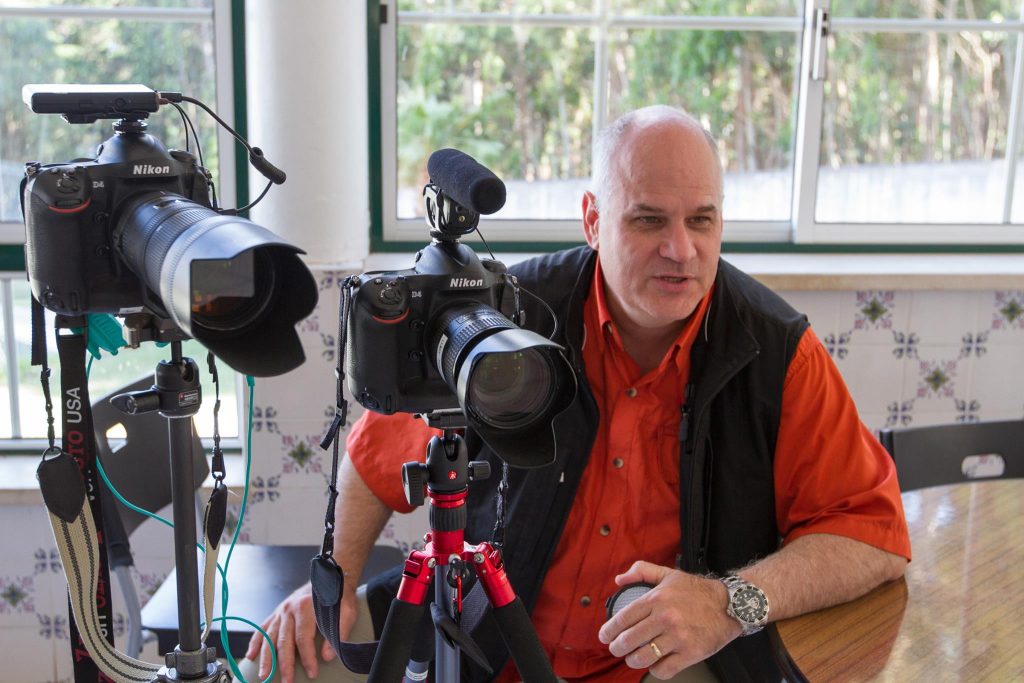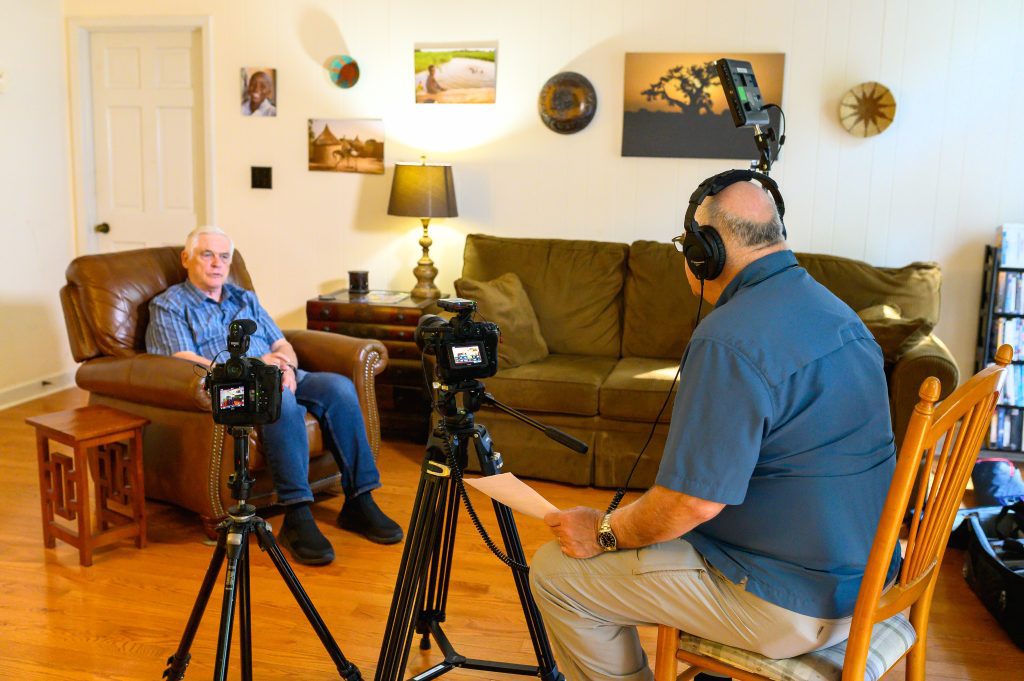During the pandemic, Stanley set up and interviewed Chiropractor Dr. Charlie Weiss of Holcomb Bridge Chiropractic in Rowell, Georgia.
Nonprofits often struggle to decide between using volunteers or hiring professional communicators such as producers, photographers, and videographers. While it may be tempting to use volunteers to save money, relying on professionals can significantly impact the effectiveness and sustainability of a nonprofit’s mission, especially regarding communication strategies.

Why Nonprofits Should Use Professionals in Communications:
- Impactful Storytelling: Professional communicators bring a high level of expertise in crafting stories that resonate emotionally with audiences. This is critical for nonprofits, as compelling stories help donors connect with the cause more deeply. Organizations like Charity Water have used professional storytelling to engage supporters with authentic, emotionally charged narratives, which have led to higher donor trust and more significant contributions.
- Consistency in Branding: One of the critical aspects of maintaining donor trust is having a consistent and professional brand image. Volunteers, while passionate, may not have the experience needed to maintain uniform messaging across platforms. Professionals are trained to handle multi-channel strategies and create brand guides that ensure the nonprofit’s identity is cohesive, which enhances long-term donor relationships.
- Efficiency and Focus: Professionals are equipped with the tools and knowledge to handle the complexities of media production efficiently. From pre-production planning to post-production editing, they streamline the process, ensuring deadlines and resources are effectively utilized. On the other hand, volunteers may lack the necessary time and expertise, leading to delays and suboptimal outcomes.
- Audience Engagement: Nonprofits need to engage their supporters through various media channels. A professional photographer or videographer can capture high-quality content that tells a story visually, engaging audiences in ways that statistics alone cannot. This engagement often leads to higher donations, as supporters can see the direct impact of their contributions.
- Avoiding Risk: Without trained professionals, nonprofits risk producing content that could be perceived as amateurish or even misleading. Poor-quality media can damage a nonprofit’s reputation, making it appear untrustworthy. Moreover, volunteers may not always understand the nuances of sensitive storytelling, which could inadvertently lead to legal or ethical issues, further undermining the organization’s credibility.

Risks of Not Using Trained Communications Professionals:
- Brand Dilution: Inconsistent messaging and visuals can dilute the nonprofit’s brand, making it harder to differentiate from competitors. Without professional oversight, the organization’s voice may lack clarity, causing confusion among supporters and stakeholders.
- Lost Donor Engagement: Volunteers might need to gain the skills to create media that effectively capture the attention of potential donors. This could result in less engagement on social media, fewer website visits, and, ultimately, a decline in fundraising.
- Long-term Costs: While volunteers may seem cost-effective initially, the long-term costs of ineffective communication—such as lower donor retention or decreased fundraising—can outweigh the short-term savings. Correcting poorly executed media projects can be more expensive than getting it right the first time with professionals.
Conclusion: For nonprofits, communication is more than just delivering a message; it’s about connecting with donors and supporters. Hiring professional photographers, videographers, and producers ensures this communication is done effectively, increasing monetary donations and volunteer involvement. While volunteers are invaluable in many areas, the role of skilled professionals in nonprofit communications should not be underestimated, as it is a crucial part of building a sustainable and prosperous organization.
With over two decades of experience organizing the Southwestern Photojournalism Conference and creating mission Storytelling Abroad Workshops, I’ve seen firsthand professionals’ vital role in nonprofit communications. From 1990 to 2024, I worked with both amateurs and professionals, particularly in mission photography. Through this, I firmly believe that organizations should prioritize hiring professionals for storytelling, especially for projects to raise funds or build public engagement. Professionals bring expertise, consistency, and the ability to craft impactful narratives. Once these critical stories are in place, volunteers can work alongside them, learning and contributing to internal projects. This approach ensures the highest quality in external-facing communication while nurturing the next generation of storytellers.

